The images show flattened, empty city blocks, smoke drifting across the devastated landscape and a huge crater next to the dome of an Islamic center.
This is Marawi, a city in the southern Philippines that’s been under siege for six weeks as government forces fight to push ISIS militants from the area.
Satellite images from Stratfor, a geopolitical intelligence platform, obtained by CNN show the extent of the damage inflicted by airstrikes and militants, led by the infamous Maute group.
Around half of the neighborhoods in the city – the areas marked in yellow below – have been affected by the bombing.
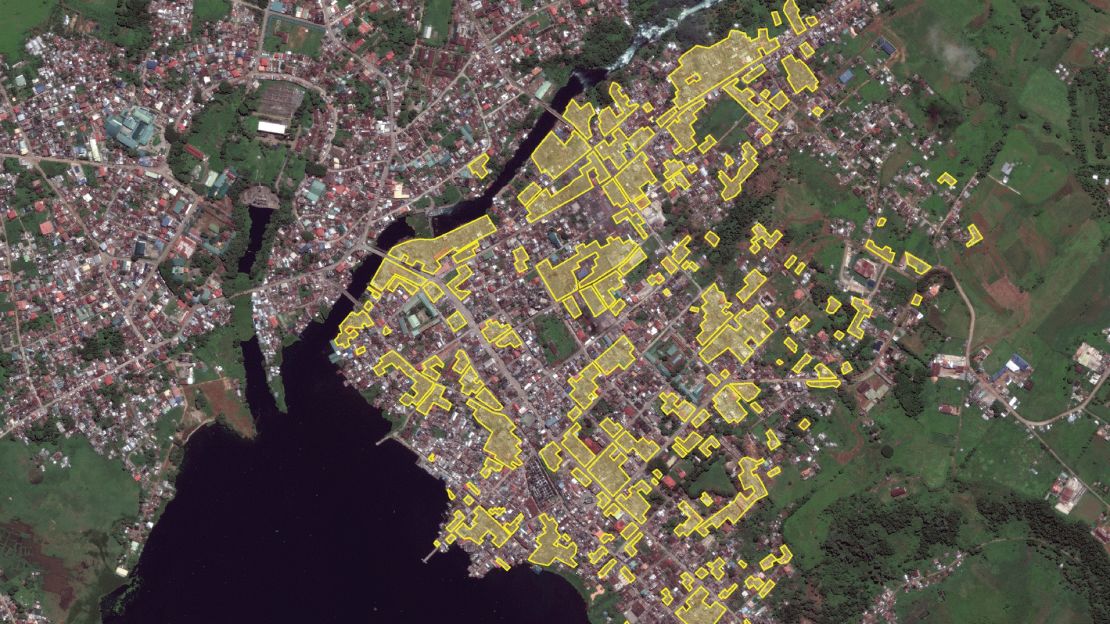
Former Abu Sayyaf fighter warns worse to come in the Philippines
The most striking thing is the extent of the damage, says Sim Tack, a senior analyst at Stratfor.
“We didn’t expect it to be that big. We heard about the airstrikes and artillery but it’s pretty bad throughout the city,” he says.
“When I’ve looked at other war zones, the closest thing to compare (Marawi) to is Mosul (Iraq). I haven’t seen battlefields where all houses were destroyed like that.”
In Mosul, US-led coalition is getting closer to ridding Iraq’s second-largest city of ISIS militants after fierce fighting that’s destroyed neighborhoods and historic landmarks.
“The Philippines military and government have had no choice” but to hit Marawi as heavily as they have done until now, says Scott Stewart, vice president of analysis for Stratfor. “We saw in Iraq and Syria what happens when you don’t move fast” to dislodge militants from urban areas that they have taken, he says.
Widespread destruction
At the end of May, the Philippines government launched a series of airstrikes in attempt to regain control of Marawi, one of the Philippines’ only majority-Muslim cities.
“The destruction is very clear. In this (image) the buildings are pretty much flattened, and that’s happened throughout the city,” says Tack.
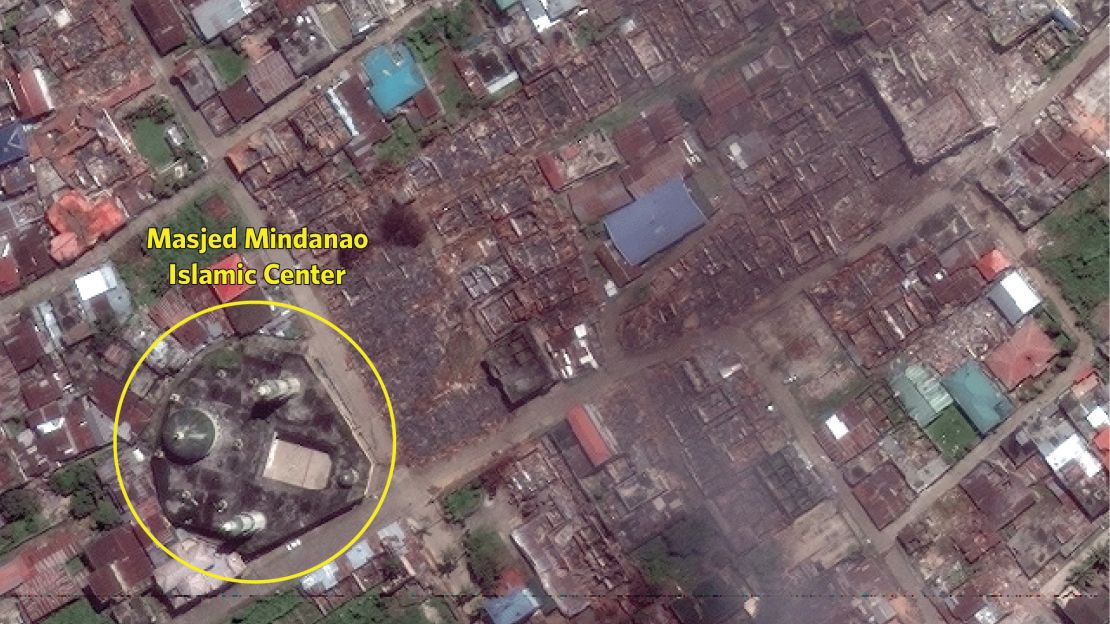
Tack says that at least some of the damage is caused by the militants. “You can see ongoing fires. But the level of damage lines up with artillery barrage and airstrikes.”
One of the only buildings that remains standing in this image is the Masjed Mindanao Islamic Center, in what could have been a deliberate move by authorities.
“The Philippines has taken on a similar approach to US in modern conflicts, trying not to damage the mosques so not to be perceived as waging a war on Islam, not the militants,” Tack says.
Bloodied and broken: Rising toll of Philippines’ war with ISIS
Heavy bombing
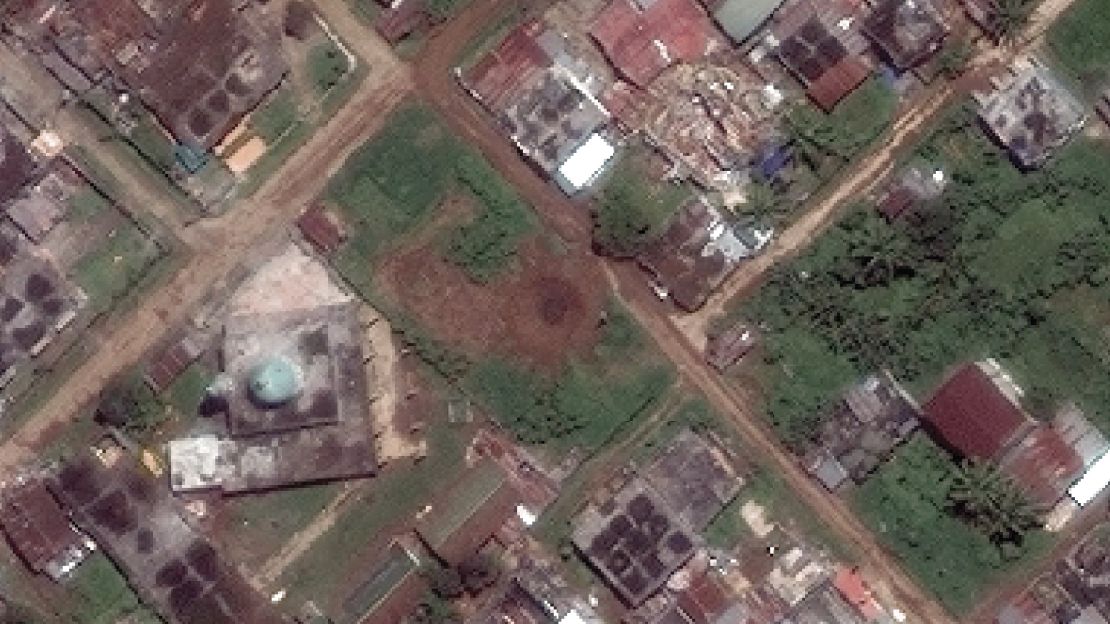
One image shows a large crater in the ground, which appears to have been the result of an airstrike.
“There’s a limitation for the Philippine military – when it comes to their airstrikes, using the (American OV-10) Bronco aircraft – they’re not the most modern or well-equipped aircraft,” Tack says.
Strikes from the Vietnam-era Bronco planes are not considered as surgical as more advanced, modern bombers.
AFP positions
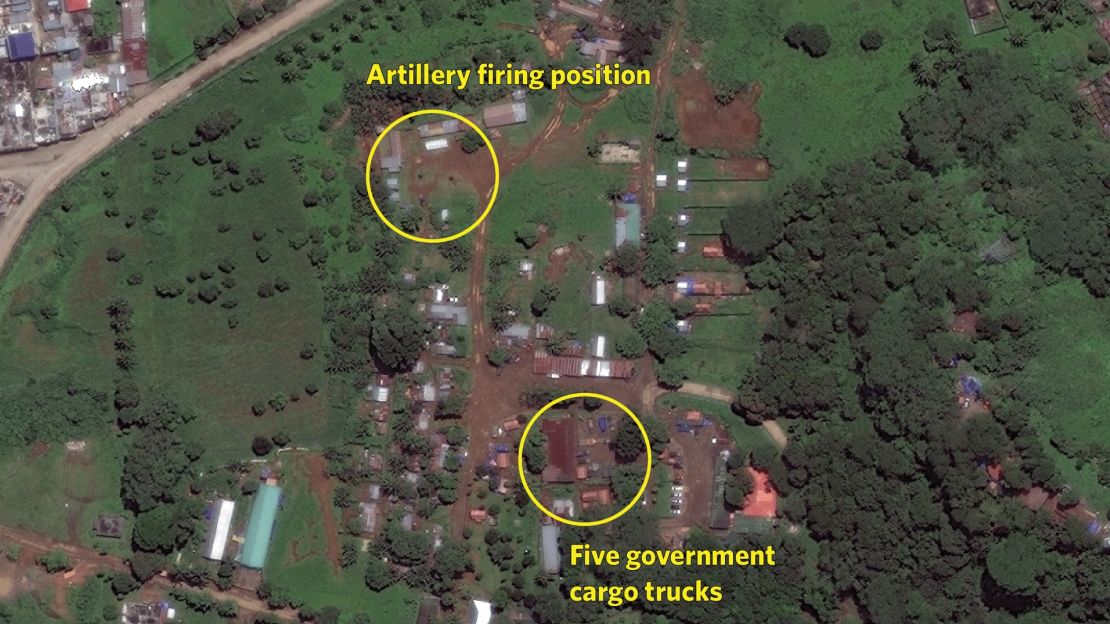
Images on the outskirts of the city, to the east and northwest, show the AFP artillery positions, which Tack says is consistent with the tactics that the government has been employing.
“We didn’t notice any big groups of military vehicles, basically we saw little groups of cargo trucks around the city,” he says.
“If you look at how the AFP has been fighting this lines up with this, house-by-house, street-by-street with infantrymen on the ground,” supported by airstrikes and artillery.
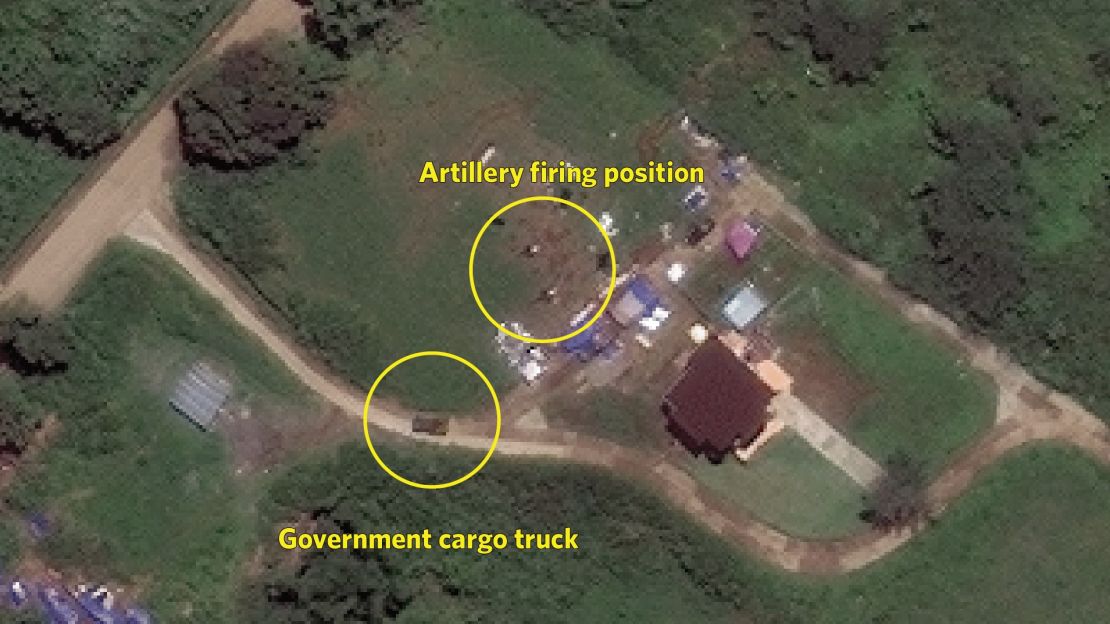
Destruction – followed by reconstruction?
The real battle for hearts and minds will begin once the last remaining militants are finally ousted from their positions, says Stewart. If blame for the city’s destruction is seen to be the fault of the government, it will drive up sympathy for the militants.
But if it is assigned “properly,” and the militants are seen to have wrought this destruction through their actions it could have a “deleterious effect” on ISIS’ attempts to stake Mindanao as an outlying province of its dreamed-of caliphate, he told CNN.
But it’s up to Philippines President Rodrigo Duterte to convince the citizens of Marawi.
The government is currently “putting the objective of removing ISIS fighters above the saving the city,” says Tack, who agrees that it is crucial that Duterte wrest back the mantle of rescuers of the city.
“I think it’s notable that you already see him talking about (reconstruction funds), trying to own the narrative – ISIS will say that the AFP destroyed the city,” he says.
“The counter-narrative is reconstruction, they’re going to be the fixers of Marawi rather than the destroyers.”
Fighting ISIS in the Philippines: ‘I will never go back to Marawi’


